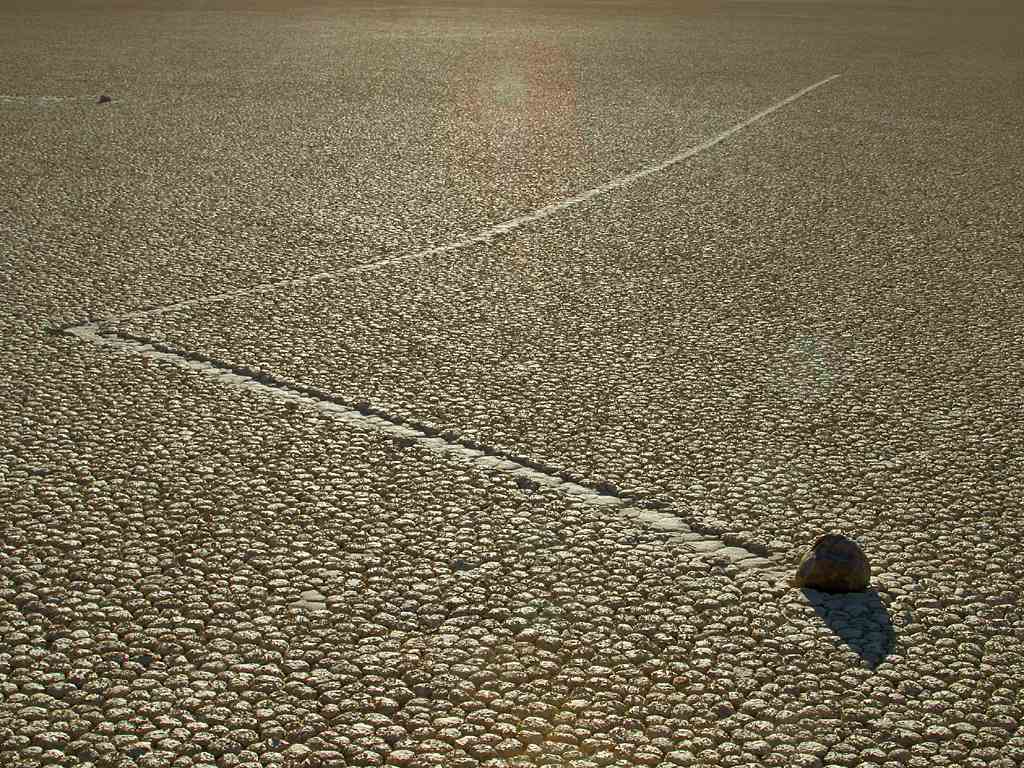Sailing stones are a geological phenomenon found in Death Valley’s Racetrack Playa. The stones slowly move across the surface of the playa, apparently without human or animal intervention, and they leave telltale tracks as they go. They have never been seen or filmed in motion—until now.
“Over the years, scientists and laypeople offered all sorts of theories to explain the sailing stones. Some said the stones were blown by strong winds or pulled by magnetic fields. Others blamed pranksters — or even aliens. Not satisfied with those explanations, a group of researchers and volunteers in 2011 attached GPS units to 15 rocks and placed them in Racetrack Playa — the dry lake formation where the moving rocks are found — and sat back to see what would happen. One of the researchers, Johns Hopkins University physicist Dr. Ralph Lorenz, called the project ‘the most boring experiment ever’” (source).
Boring or not, “Two researchers now say the rocks – which can sometimes be heavy and large – are propelled along by thin, clear sheets of ice on breezy, sunny days. They call it ‘ice shove.’ ‘I’m amazed by the irony of it all,’ paleobiologist James Norris tells the LA Times. ‘In a place where rainfall averages two inches a year, rocks are being shoved around by mechanisms typically seen in arctic climes.’”
“The findings are based on a lucky accident by James Norris and his cousin Richard Norris – while they were studying the sliding rock phenomenon. They actually witnessed the boulders moving in December when they went to check their time-lapse cameras in the valley. ‘There was a pop-pop-crackle all over the place in front of us, and I said to my cousin, ‘this is it,'” Richard Norris says in the science journal Nature. They watched some 60 rocks sail slowly by, leaving the well-known snaking trails in the ground. ‘A baby can get going a lot faster than your average rock,’ Norris notes. The rocks also don’t slide around very often – scientists estimate only a few minutes out of a million – which is why the event has not been noticed before” (BBC News From Elsewhere).



